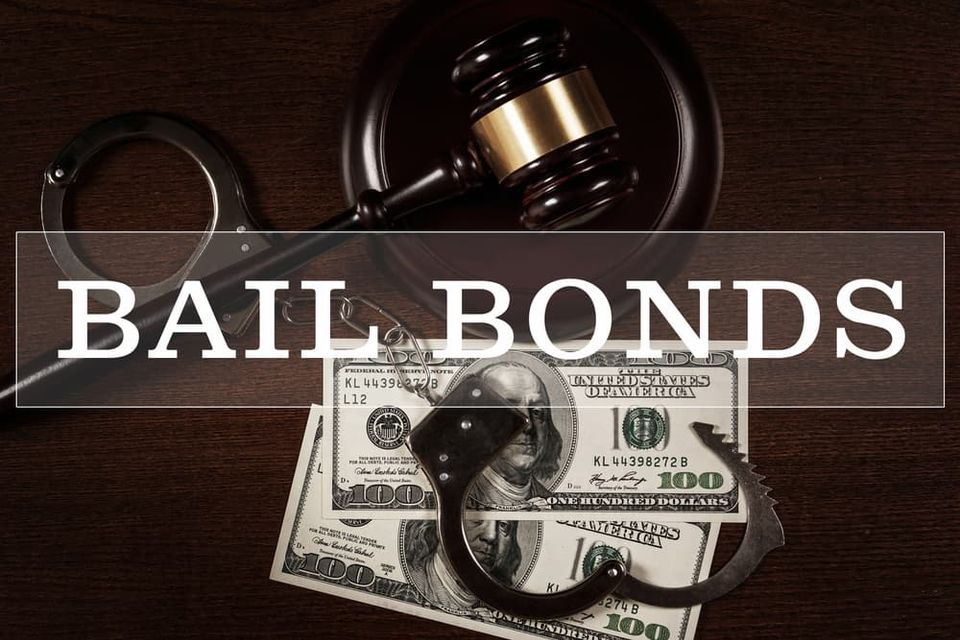1 Percent Bail Bonds: A Cost-Effective Solution for Your Bail Demands
1 Percent Bail Bonds: A Cost-Effective Solution for Your Bail Demands
Blog Article
The Duty of Bail Bonds in the Criminal Justice System
Bail bonds work as an essential system within the criminal justice system, facilitating the launch of defendants while guaranteeing their commitment to show up in court. This system not only mirrors the presumption of virtue but additionally addresses pressing concerns such as jail congestion and the inequities faced by low-risk people. The potential risks and economic ramifications connected with bail bonds increase vital questions regarding their total efficacy and fairness. As we discover these complexities, the ramifications for offenders and their families end up being progressively substantial. What might this suggest for the future of justice?
Recognizing Bail Bonds
Bail bonds serve as a crucial mechanism that enables offenders to safeguard their launch from wardship while waiting for test. The bail bond process typically entails a third-party company that agrees to pay the full bail quantity on part of the accused, charging a non-refundable cost, generally around 10%.
Recognizing bail bonds is vital for comprehending how they influence both accuseds and the justice system. They assist reduce prison congestion by enabling individuals that might position a minimal trip danger or risk to public safety to continue to be complimentary while their instance is pending. This principle upholds the assumption of innocence, making sure that individuals are not unjustly penalized prior to a verdict is gotten to.
Furthermore, bail bonds can likewise have substantial monetary ramifications for offenders and their households. The charges charged by bail bond firms can strain sources, especially for lower-income people. The bail bond system is an intricate interplay of lawful, financial, and moral factors to consider that reflects broader social worths relating to justice and private legal rights.
The Bail Process Clarified
The bail process includes numerous key steps that promote an offender's launch from custodianship while ensuring conformity with court looks. Originally, a defendant is arrested and reserved, whereupon a bond hearing is typically arranged. Throughout this hearing, the judge identifies the suitability of bail based upon variables such as the nature of the crime, the accused's criminal background, and the possible trip risk.
If bail is given, the accused or a rep can either pay the full bail amount in money or protect a bail bond via a qualified bail bondsmansman. The bondsman charges a non-refundable fee, typically a portion of the overall bail, for ensuring the court that the offender will certainly show up for all set up hearings.

Effect On Families and defendants

Furthermore, when an offender is unable to safeguard bail, family members often encounter the this website daunting reality of prolonged separation. This disruption can affect household dynamics, resulting in feelings of isolation and helplessness. Children, particularly, may struggle to understand their parent's absence, which can additionally intensify emotional obstacles within the family.
Additionally, the burden of protecting bail can develop tensions within families, as they might need to make hard choices relating to funds. The stress to elevate funds for bail can strain relationships, sometimes causing dispute or feelings of resentment. Overall, the bail process not only influences offenders' legal situations yet likewise reverberates throughout their family frameworks, highlighting the significant consequences of this critical element of the criminal justice system.
Financial Risks and effects
Accuseds' economic scenarios typically face substantial stress as a result of the bail procedure, which can impose substantial costs and threats. When individuals are incapable to pay bail outright, they often transform to bail bond agents, who bill a non-refundable premium, generally around 10% of the bail amount. This cost can produce an immediate monetary problem, drawing away funds that could or else sustain the defendant's family members or cover vital living expenses.
Additionally, using a bail bond can cause further monetary implications. If the accused falls short to appear in court, the bail bond representative might look for to recoup the full bail amount from the individual or their co-signers, potentially bring about severe economic repercussions, including garnished incomes or loss of collateral. Low Income Bail Bonds. The stress of these financial dangers can exacerbate the currently challenging conditions bordering a criminal cost
Furthermore, for numerous accuseds, especially those from lower-income backgrounds, the bail procedure may result in prolonged periods of pretrial detention if they can not manage a bond, leading to lost employment and income. This cycle of economic stress highlights check that the considerable economic threats connected with the bail system within the criminal justice structure.
Current Arguments and Reforms
Countless discussions bordering the bail system have arised over the last few years, concentrating on its equity and efficiency within the criminal justice structure. Doubters say that the current system disproportionately influences low-income people that can not pay for bail, leading to pretrial detention and intensifying social inequalities. This has stimulated discussions on the requirement for reforms that prioritize justness and justice.
In action, several jurisdictions have introduced legal changes intended at removing money bail completely or executing danger assessment tools to go to my site determine pretrial release qualification. Supporters for reform insist that such steps can reduce congestion in jails and decrease the total prices related to pretrial detention. Nevertheless, opponents express problems pertaining to the integrity of danger evaluations and the potential for racial bias in their application.
Furthermore, the discussion includes the duty of bail bond business, which some view as unscrupulous. Phone calls for increased law or full abolition of bail bonds are obtaining traction, showing an expanding motion in the direction of a more equitable criminal justice system. As these debates proceed, the focus continues to be on stabilizing public safety with the civil liberties of individuals charged of criminal offenses, highlighting the ongoing demand for reform in the bail system.
Verdict
To conclude, bail bonds act as a vital device within the criminal justice system, helping with the launch of accuseds while guaranteeing their appearance at trial. By offering an option to money bail, bail bonds mitigate jail congestion and promote a much more equitable legal process for low-risk people. Ongoing discussions and reforms bordering bail methods highlight the requirement for continual analysis and adjustment of the system to stabilize public security, individual legal rights, and monetary availability.
Bail bonds offer as a pivotal mechanism within the criminal justice system, helping with the release of accuseds while guaranteeing their commitment to appear in court. The bail bond procedure typically includes a third-party business that agrees to pay the full bail amount on part of the offender, billing a non-refundable charge, generally around 10%.
When individuals are unable to pay bail outright, they frequently turn to bail bond representatives, who charge a non-refundable costs, commonly around 10% of the bail quantity. If the accused stops working to show up in court, the bail bond representative might seek to recover the full bail quantity from the individual or their co-signers, possibly leading to extreme economic repercussions, including garnished salaries or loss of security. By supplying a choice to cash bail, bail bonds mitigate prison congestion and promote a more equitable legal process for low-risk individuals.
Report this page